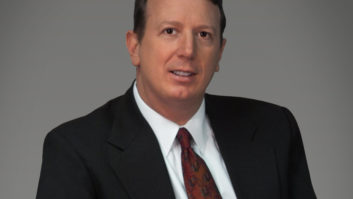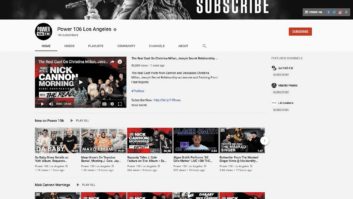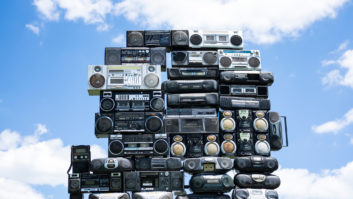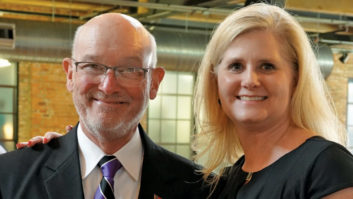The author of this commentary is a broadcast technical author in Australia, which still uses AM radio extensively. He has spent a lifetime in training technicians. He writes here in response to Larry Langford’s recent commentary “Time to Come Clean on AM Quality.”
Larry Langford’s brief history should have noted that AM was invented in 1901 and the first permanent broadcasts were 110 years ago. By comparison, cellphone companies switch off their oldest technology every eight years, leaving an operating life of 16 years.
The AM channels are spaced 10 kHz apart with a high-frequency audio limit of 10 kHz, so the transmission channels overlap the adjacent channels. This may have been fine in the past due to the quality of audio equipment, but now with audio processors there’s plenty of energy in the 5–10 kHz range to cause more audible interference to broadcasters in the adjacent channels. Outside of the Americas, spacing has been reduced to 9 kHz with a 4.5 kHz overlap on each adjacent channel.
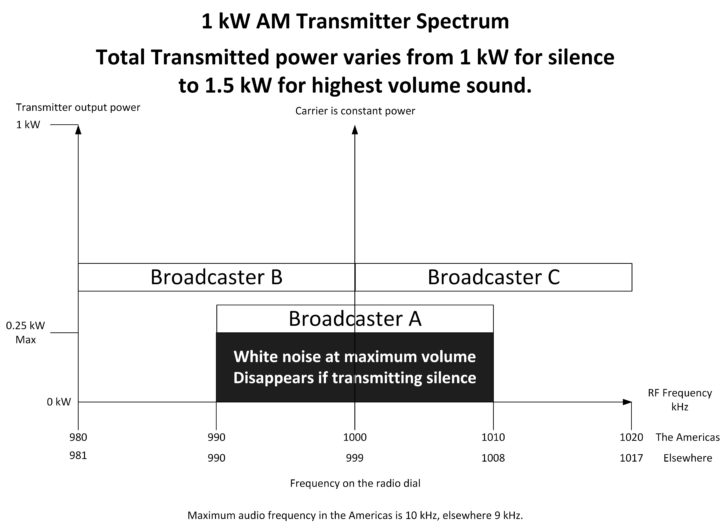
This overlapping is the reason many AM stations must reduce power at night.
As the number of AM stations rose, it may have been better to put in a 5 (4.5) kHz brick-wall filter prior to transmission, which would have eliminated much of the interference. Without the brick-wall filter at the transmitter, the receiver manufacturers took the cheapest option and limited receivers to speech frequencies to stop the interference. This has made music sound dull. If instead they had installed a 5 (4.5) kHz brick-wall filter in the receiver, at least they could have maintained the much more important frequencies between 3.5–5 kHz.
Larry has been lamenting the lack of implementation of pre-emphasis in AM radio from the 1988 version of the NRSC standards, which were updated in 2018 to include HD Radio, NRSC-1-C, a voluntary standard. However, of the receivers on the HD Radio website, there are now only infotainment systems in vehicles, aside from Sangean and Insignia radios with HD capability.
Software-designed receivers have made discussion of pre-emphasis irrelevant because there is no intermediate frequency filter. They use the homodyne or direct conversion system to convert the signal directly to audio. This makes any out-of-channel signals supersonic, thus inaudible and easily filtered digitally. SDRs are used in cellphones and infotainment systems, as they have a typical frequency range from almost “DC to daylight,” i.e., 100 kHz–2 GHz. If the broadcaster uses pre-emphasis and a standard SDR receiver, which has no de-emphasis, the sound will be excessively bright.
Because SDRs perform most functions digitally, they contain a specialized microprocessor that can be loaded with digital radio firmware such as Digital Radio Mondiale, DAB+ and HD Radio, as well as FM and AM. This is a single chip!
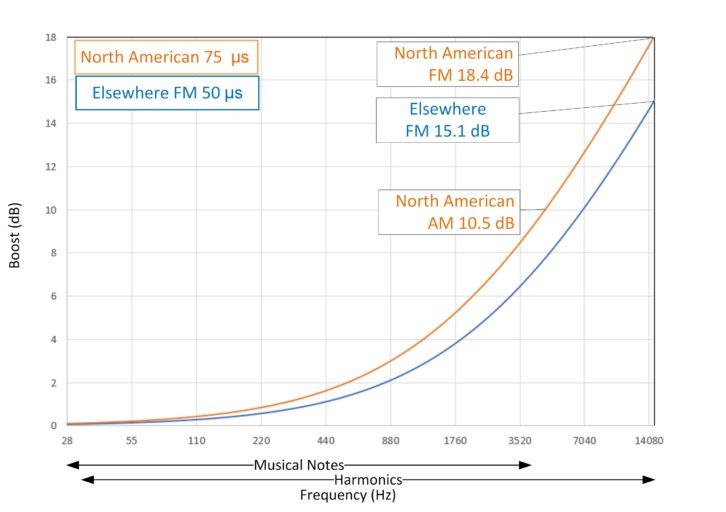
Pre-emphasis is used to minimize the characteristic hiss in FM and in AM to try to overcome the filtering effect of the intermediate frequency filter used in common super-heterodyne receivers.
There is a disadvantage to the use of pre-emphasis and de-emphasis in FM and AM. All broadcasters use sound processors that employ nine-octave-wide compressors. This will increase the level of high frequencies, which if boosted by pre-emphasis can overload the transmitter and cause interference. So the processors must not boost high-volume, high-pitched sounds. This results in dullness on loud sounds. Digital transmission systems do not use pre-emphasis as it is unnecessary; so it will sound “brighter,” particularly on drums, tympanies and piccolos, as they do live.
AM has a number of disadvantages:
It originally contained a carrier to provide DC bias for the “crystal” diode detector to prevent severe distortion. Modern AM and HD Radio AM receivers still use a detector diode buried in an integrated circuit. This is expensive for broadcasters and causes electric companies to produce lots of carbon dioxide on their behalf.
SDR radios when tuned to Digital Radio Mondiale and DAB, use some low-powered pilot tones to control the recreation of the carrier, because there is no wasteful carrier transmitted.
Also not mentioned by Larry Langford was the effect of increased interference and poor vehicle antennas, making reception unpleasant. “Static” from lightning has always been present.
There’s no immunity from noise, which has been increasing since the invention of the switched-mode power supply used in nearly everything powered by electricity, including electric vehicles and lighting. In addition, there are now many more electrical lines with high-voltage insulators to arc!
Beyond all this, AM has issues because the overlapping channels cause many broadcasters to reduce their coverage areas at night. It has high audio distortion levels and no stereo sound. And, as discussed above, there is a lack of high-frequency sound.
Hybrid FM, hybrid AM and pure digital FM HD Radio systems use overlapping channels, so, interference will remain, forcing broadcasters to hire lawyers. Lawyers are not required for the pure digital AM HD Radio, which has a low data rate mode, keeping the transmission within its channel.
The solution to this is to use the old analog TV Channels 2–6 (VHF Band I), where only 41 medium-power and 61 very low-powered transmitters still operate in North America.
One TV transmitting channel contains 58 DRM transmitting channels, which can carry three stereo music channels each. There are 208 DRM channels available in Band I in the Americas. One transmitter can carry six DRM transmission channels or 18 programs. All programs from one site will have the same coverage area, unlike the current HD1–HD4 channels, which are transmitted at a very low power to prevent interference to their own and other broadcasters’ signals.
Many AM broadcasters have obtained FM translators, choking the FM band, whereas Band I is virtually deserted and has more channels than the number of AM and FM channels combined. Since Band I is virtually deserted and the 100 kHz wide channels do not overlap, the FCC can allocate the power required to fill the license area without restrictions. It is also possible to use a low-powered repeater transmitter on the same channel within the coverage area for blackspots.
A decade ago in the United States, the telcos pushed government and broadcasters to complete the conversion of all television stations to digital.
Similarly, for AM radio, I propose the FCC provide a free DRM Band I license for every radio broadcaster for 10 years, provided they begin broadcasting in that band within five years. They would be allowed to simulcast with their existing broadcasts for 10 years, after which all existing AM/FM broadcasting will cease.
After five years it would be illegal to sell radios (including in vehicles) that cannot receive DRM Band I. Capable receivers already exist. There are more DRM radio models on the market than HD Radios, and in India 4 million cars have been factory installed over the past three years at no extra cost. For older cars, a Starwaves TukTuk receiver is available that converts the DRM signal into FM stereo.
Given the competition from audio on-demand services and the telcos, isn’t the dramatic drop in transmission costs and greenhouse pollution enough to convince the FCC to take this step?
This should be a task for the new president/CEO of the National Association of Broadcasters.
Comment on this or any article. Write to radioworld@futurenet.com.


